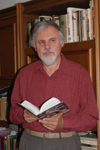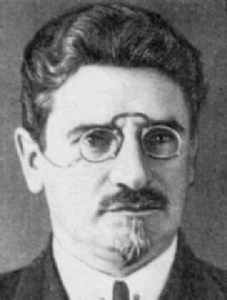By Alex Gordon


HAIFA, Israel — In 1909, Lenin published Materialism and Empiriocriticism. He wrote: “The basic idea of the new physics is the denial of the objective reality given to us in sensation and reflected by our theories, or the doubt of the existence of such a reality.”
Lenin wrote about the ideas of Planck and Einstein: “The use by philosophical idealism of new physics or idealistic conclusions from it is not caused by the fact that new kinds of substance and force, matter and motion are discovered, but by the fact that an attempt is made to think of motion without matter.”
Opponents of the theory of relativity pointed to its “subjective idealism,” criticized by Lenin. In 1931, the Central Committee of the Communist Party of USSR issued a decree prohibiting the violation of the principle of “partisanship of philosophy and natural science.”
Physics and other sciences became part of the class struggle: Newton’s mechanics was considered ideologically correct, and the theory of relativity was dismissed as speculative fiction.
Future Nobel Prize winner in physics Igor Tamm wrote in 1933: “Comrade philosophers in their responsible speeches often reveal such a degree of scientific illiteracy, not even in the field of the latest achievements of science, but in the field of its elementary fundamentals, which would not be good for an ordinary university teacher. Many philosophers mask their ignorance and misunderstanding with lush, but meaningless twaddle, which only obscures the essence of the issues.”
The only philosopher in Soviet Russia who spoke in defense of quantum mechanics and the theory of relativity and proved that the new theories do not contradict Marx’s philosophy, was Semyon Semkovsky, Doctor of Philosophy, Academician of the All-Ukrainian Academy of Sciences.
Semkovsky (Bronstein at birth), a cousin of Lev Trotsky, was born in the Belarusian town of Mogilev on March 4, 1882. Semyon’s father was a pharmacy owner. While studying at the Mogilev gymnasium Semyon Bronstein joined the Russian Social Democratic Labor Party (RSDLP). After graduating from the gymnasium with a gold medal, he entered the law faculty of St. Petersburg University.
In 1903 Semyon became a Menshevik. During the First Russian Revolution of 1905, Semyon, who took the pseudonym “Semkovsky.” was active in Belorussia, then moved to work in Russia, where he was arrested. Coming out of prison five months later, in 1906, Bronstein-Semkovsky became a member of the Menshevik wing of the St. Petersburg Committee of the RSDLP. After another trial and sentence – a year and a half in prison – he fled abroad. In 1907-1917 Semkovsky lived in Vienna. Abroad he got acquainted with his cousin Trotsky. They lived in the same house. Over time, great political differences arose between them, which boiled down to a conflict between Bolsheviks and Mensheviks.
After the February Revolution in 1917, Semkovsky returned to Russia, where he became a member of the Central Committee of the Menshevik Party. He did not accept the October Bolshevik Revolution, and in 1918 fled to Kiev, which was not yet Bolshevik. In August 1919 Kiev was captured by the White Army, and Semkovsky was immediately arrested. When the Bolsheviks entered the city in December 1919, he was arrested again, and in 1920 he was convicted by a revolutionary tribunal for allegedly organizing aid to the White Army. Semkovsky was disenfranchised and exiled to Kharkov. He repeatedly and unsuccessfully attempted to flee Soviet Ukraine abroad. In 1921 he was amnestied but forbidden to engage in social and political activities. In 1923 he was forced to leave the Menshevik Party.
Semkovsky became a professor of philosophy and headed the chair of dialectical materialism at Kharkov University. He organized a city philosophical seminar with the participation of leading philosophers, physicists and mathematicians. There he presented the philosophical aspects of the theory of relativity and supported it with the position of materialist dialectics, publishing The Theory of Relativity (1925) and Dialectical Materialism and the Principle of Relativity (1926).
On March 3, 1936, Semkovsky was arrested. On March 20, 1936, investigators accused him of organizing a “Trotskyist-Menshevik” underground” and mobilizing scientists into it. He refused to plead guilty. Then “testimonies” of 16 teachers and professors of the university were produced against him. All these people were involved in the so-called “professors’ case.” fabricated against 37 people, 10 professors and 27 teachers of Ukrainian universities. One of those arrested, Lev Shtrum, a professor at Kiev University and the Institute of Physics of the Academy of Sciences of Ukraine, told the investigation that Semkovsky called the dictatorship of the proletariat “dictatorship over the proletariat” and said that there was no democracy in the country and that its only master was Stalin. According to his testimony, Academician Semkovsky “slandered” Stalin’s policy of building heavy industry, stating that “It is necessary to build light industry first, […] to clothe and feed the population”.
At the interrogation on May 11, 1936, the investigator claimed that the arrested academician urged his subordinates to commit terrorist acts against the First Secretary of the Communist Party of Ukraine Stanislav Kosior and the First Secretary of the Kiev Regional Committee of the All-Union Communist Party Pavel Postishev (both were charged with espionage and Trotskyism and shot in February 1939).
On March 7, 1937, Semkovsky was accused of “terrorism” and “participation in a counter-revolutionary organization.” The investigators also claimed that the arrested man (a Jew!) was connected with the Gestapo.
According to the recollections of Semkovsky’s son, his father, while in the prison hospital, was somehow miraculously able to pass on a letter that an unknown person had thrown into the mailbox of his family’s house. The academician wrote to his son and wife: “I am calm, awake, unwavering in truth and honor, which are dearer to me than life, and no prospects absolutely do not frighten me.”
During the investigation, Semkovsky did not incriminate any of the defendants in his case. The case was heard at a closed court session on March 8, 1937 in Moscow without witnesses, prosecution and defense. The verdict was announced – execution and confiscation of property. Semkovsky was executed the same evening. All those convicted in the “professors’ case” who had admitted the false accusations against them and their associates and who had falsely denounced each other and Semkovsky were executed. At the end of September 1956, he was found not guilty and rehabilitated.
*
Alex Gordon is professor emeritus of physics at the University of Haifa and at Oranim, the Academic College of Education, and the author of 11 books.